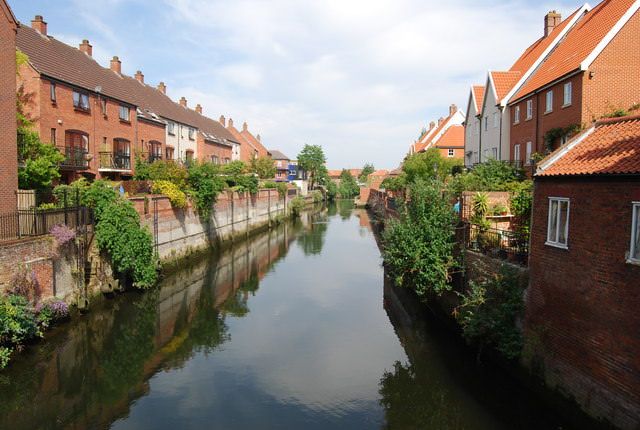Pet Flea Treatment Chemicals Polluting Britain's Streams and Rivers
Published on by Water Network Research, Official research team of The Water Network in Academic
Several of Britain’s most beautiful rivers are suffering devastating levels of pollution from flea treatment which washes into the waters from household pets.
Researchers have discovered significantly high levels of the chemical imidacloprid in rivers and streams in the remote Scottish Cairngorms mountains, the Ouse in Bedfordshire and Lincolnshire’s River Ancholme.

The River Wensum in Norwich, where high levels of imidacloprid were recorded, Source: Geograph, Labeled as reuse
The chemical is commonly applied to animals to kill arthropod parasites, with 68 registered veterinary products using the chemical to treat fleas in dogs, cats, rabbits and ferrets.
Buglife found that in three water bodies – the Tame in Manchester; Wyke Beck in Leeds and Somerhill Stream, in Kent - the problem is so bad it exceeds chronic pollution limits as a result of imidacloprid use on pets.
High levels of imidacloprid were also recorded in the Sincil Dyke watercourse in Lincoln; the River, Waveney, in Norfolk and Suffolk; and the River Wensum in Norfolk.
As well as killing insects that live or feed near water, such as mayflies, the chemicals also damage the health of fish and birds, threatening the life of our streams and rivers.
A report by the Buglife charity found that imidacloprid is now rarely used as an insecticide by farmers, it is still used in greenhouses, from it can enter the water bodies.
It concluded however that in certain parts of the country the use of it to treat fleas is main reason it is being found in such high levels in rivers and streams, particularly in urban areas, but even in the remote Cairngorms - where chemicals are understood to wash off dogs bounding into streams.
Read full article and see the map of the most contaminated waterways: Telegraph
Media
Taxonomy
- Wastewater Disposal
- Decontamination
- Contaminant Removal
- River Studies
- Environment
- River Restoration
- Pet Food